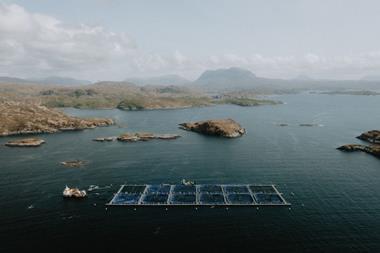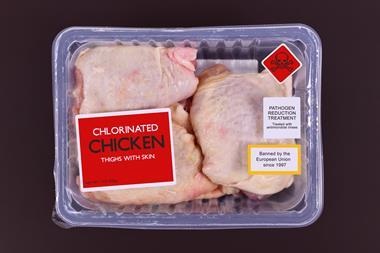A young designer who invented an innovative food freshness warning label has won a prestigious James Dyson Award.
The bio-reactive label, called Bump Mark, promises to cut food waste and keep consumers safe from out-of-date food. It becomes bumpy to the touch over time, indicating that the food has passed its use-by date.
It does this because it contains gelatine, which remains solid until it breaks down over a few days, turning to liquid and revealing bumps on the bottom of the label.
The gelatine breaks down at comparable rates to the speed at which protein-based foods, such as milk and meat, decay. The label can be adapted to different foods by slowing or speeding it up depending on the concentration of gelatine.
It also matches the rate of decay of foods regardless of how they are stored. This means it could be a more reliable indicator of freshness than printed labels.
Bump Mark’s designer, Solveiga Pakstaite, 23, won the UK round of the prestigious James Dyson Award and will now go forward to the international prize, to be awarded on 6 November.
Pakstaite developed the idea while studying industrial design and technology at Brunel University, and initially pursued it as a way to help give blind and partially sighted people information about food use-by dates by touch.
She realised her idea had much wider application when she became aware of how big a problem food waste is during her research. According to waste and recycling body Wrap, UK residents alone throw away seven million tonnes of food each year. Based on this, the Bump Mark could help save an average UK family £700 a year.
Pakstaite said she was already talking to supermarkets and food technologists about a potential commercial rollout of the Bump Mark concept.
Close menu
- Home
- Retail & Wholesale
-
Products & Suppliers
- Back to parent navigation item
- Products & Suppliers
-
Product Categories:
- Back to parent navigation item
- Product Categories:
- Alcoholic drinks
- Bakery
- Cereals & breakfast
- Cheese
- Chicken & poultry
- Chocolate
- Confectionery
- Crisps, nuts & snacks
- Dairy
- Fish
- Fresh produce
- Frozen
- Household
- Meat
- Own Label
- Sauces & condiments
- Seasonal
- Soft drinks
- Vaping
- Vegan & plant-based
- World foods
- Suppliers
- People
- Reports & Data
-
Topics A-Z
- Back to parent navigation item
- Topics A-Z
-
Popular topics:
- Back to parent navigation item
- Popular topics:
- Cost of living crisis
- Crime
- Deposit Return Schemes
- Finance
- Government & Regulation
- Health
- Inflation
- Loyalty
- Marketing
- Mergers & Acquisitions
- New Product Development
- Sourcing
- Supply chain
- Sustainability & environment
- Technology
- Ultra Processed Foods
- Vaping
- A-Z all topics
- Content by type:
- Events
- Subscribe now
Bump Mark food freshness label designer picks up James Dyson Award
By Andrew Stone2014-09-19T15:01:00+01:00
Sign in to comment on this article
Not logged in before? Register for FREE guest access today.
You will be able to:
- Read more stories
- Receive daily newsletters
- Comment on stories
Advert



















No comments yet